Need more reasons to explore Kingman, Arizona beyond the obvious Route 66 connection? This post will take you off the road, inside museums and out biking and hiking on a few trails that make Kingman so much more than a quick pitstop on a historic travel route.
Disclosure: This post contains affiliate links. If you buy something from one of our affiliates, we receive a small commission at no extra charge to you. Thanks for helping to keep our blog up and running!
Table of Contents
Explore Kingman, Arizona
Did you know that there are 140+-year-old wagon tracks in a small canyon minutes from downtown Kingman? Neither did I until we finally did more than a drive-by tour of this one-of-a-kind town. Join us as we bike, hike and tour with eyes wide open on a recent visit and see what we found!
White Cliffs Wagon Trail = A Little Bit of History
At White Cliffs on the edge of town you’ll see part of an old wagon route used in the late 1870s or 1880s to bring ore from the Stockton Hill Mines to the railroad to be transported for processing. The wagon trail was built by a local man – one William (Cap) Hardy.
The road carried wagons of ore from the booming mining company of Stockton Hill. It was also used by wagons carrying Tufa stone from a nearby quarry. Tufa was used in the construction of many of Kingman’s historic buildings.
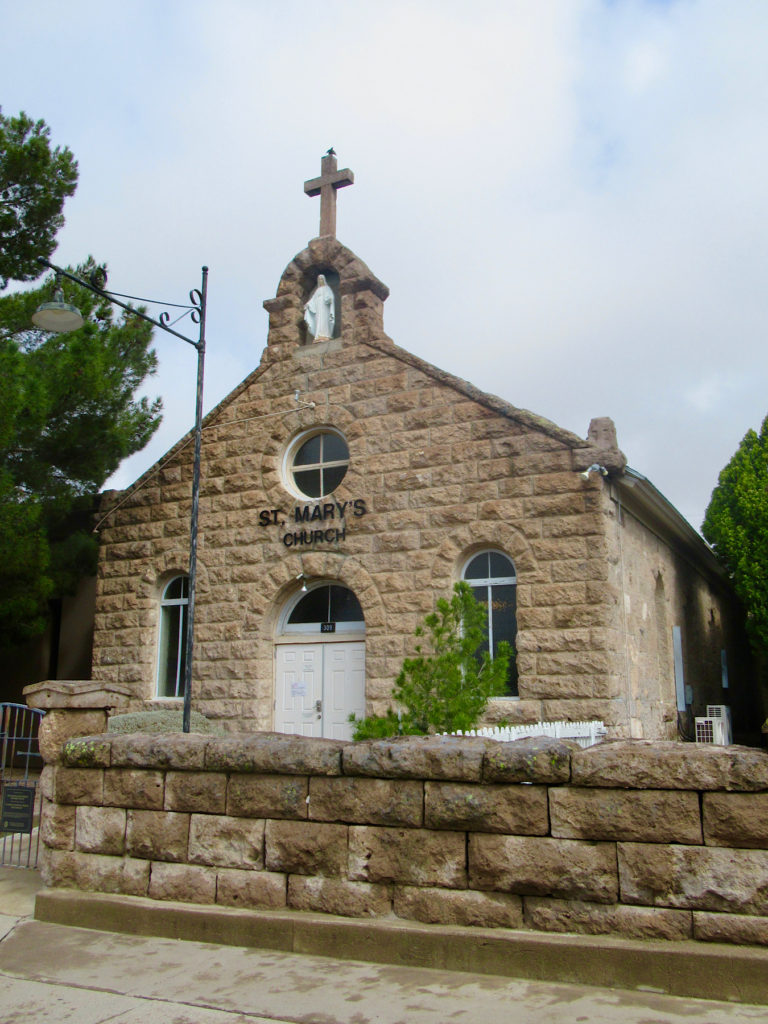
“Old Johnson Road” – as it was called – lost favour when a new route was built up on the hill in the early 1900s. Stockton Hill mines also started slowing production, which in turn further reduced use. In 1925, the final straw came when the White Cliffs Canyon flooded. The road was abandoned.
Walking into the Past
Today it’s a short walk up to the tracks. They only run for about 650 feet (198 m) but they still grab the imagination. Think about the noise of a loaded ore wagon pulled by 10 to 20 horses would make! Imagine the creaking and groaning of wood and metal and leather echoing off the sandstone walls of the canyon. Visualize men driving long poles in the side of the ruts to slow the wagon down. It’s short hike into a living history lesson.
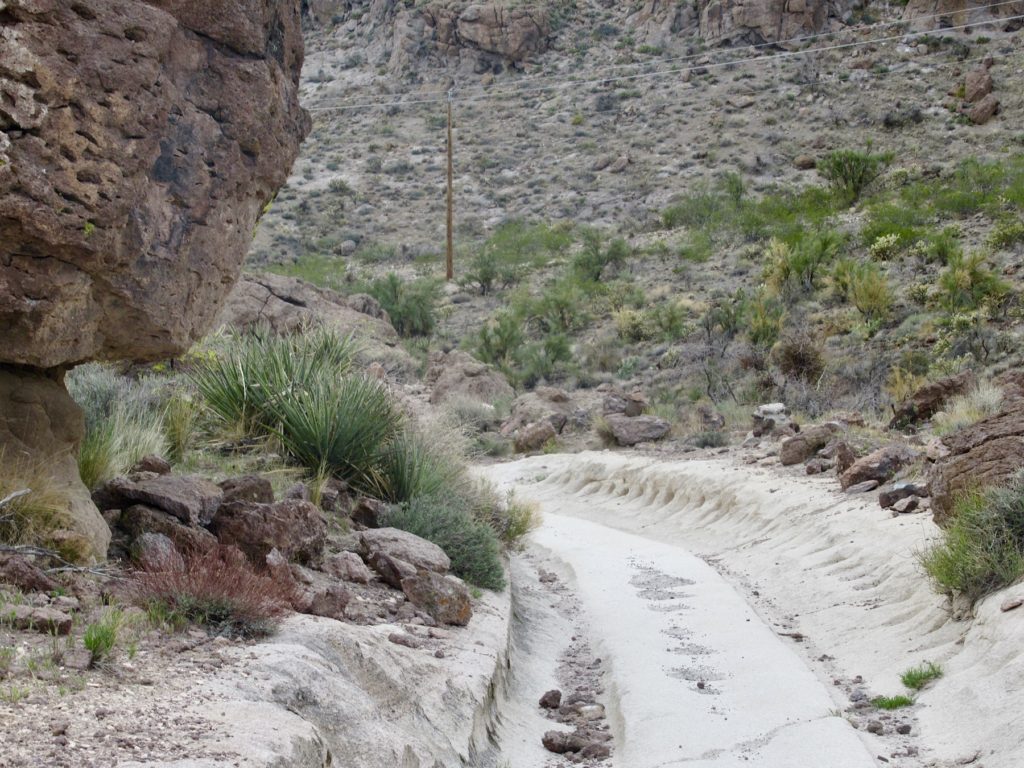
A Few Facts About Ore Wagons You Probably Never Knew!
- Length = 16 feet (4.9 m)
- Height at top of their canvases = 14 feet (4.3 m)
- Back wheel height = 7 feet (2.1 m)
- Back wheel width = 4 inches (10 cm) wide with steel treads
- Interior capacity = 250 cubic feet (7.1 cubic m)
- Cargo capacity = 9 tons (8.2 metric tons)
Getting to the Trailhead
Turn onto Grandview Ave from the Hwy 93/Andy Devine intersection. Continue on Grandview up past Gold, Silver and Copper streets to take a right on Lead Street. It turns into White Cliffs Road. The trailhead will be on the right. Cross the bridge and walk a short distance to see White Cliffs Wagon Trail.
Castle Rock = Hike-worthy
We opted to stretch our legs with a little longer trail up to Castle Rock the following warm but windy afternoon. The trail starts at Badger Trailhead – which meanders through scenic Mohave Desert vegetation and interesting granite rock outcroppings, ascending into the southern end of the Cerbat Mountains to top out at Castle Rock.
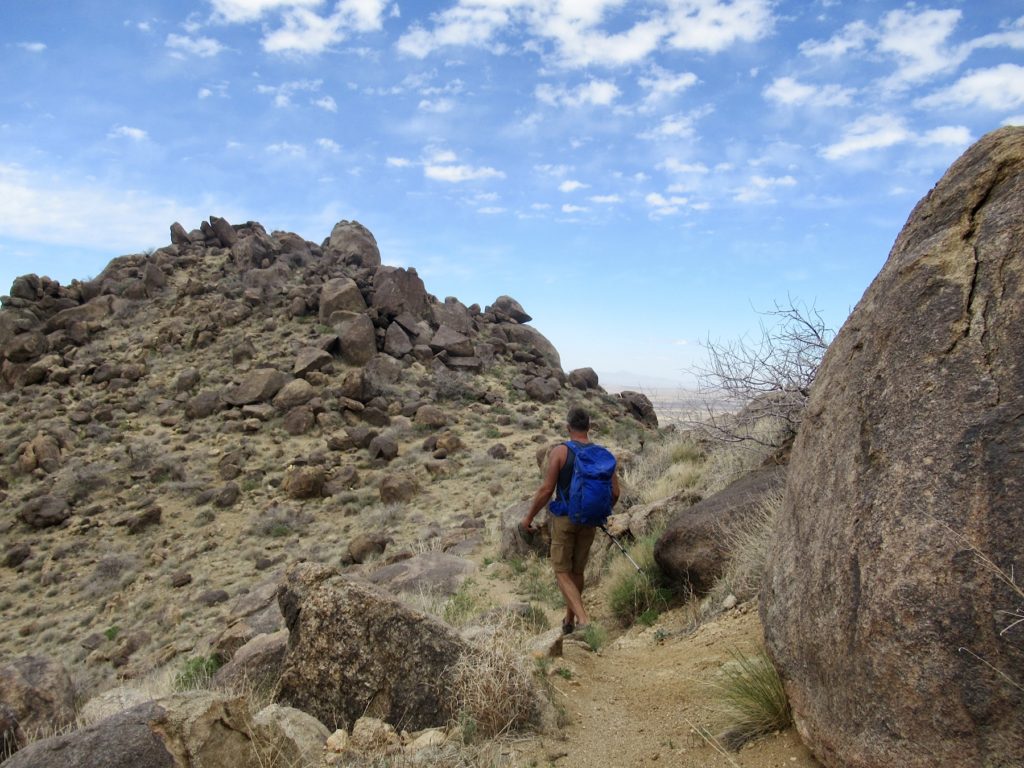
Cacti were blooming in abundance. As we zigzagged up the switch-backing trail, the steady drone of the highway slowly started to fade away. Songbirds twittered and little lizards skittered as we climbed. Red and black and all shades of brown rocks littered the hillside on the 8-mile (13 km) return distance hike with an elevation gain of 1100 feet (335 m).
The rocky top of Castle Rock takes a little extra effort to climb – and on our windy day, I chose to enjoy the view from the pass while Brad scrambled up over blocky boulders for a true summit. It took us just under two hours to reach our top destination and only five minutes less to descend!
To get to the Badger Trailhead, head out from Kingman on US-93 for 4.2 miles (6.7 km). Turn right onto the tiny parking area road just after the US-93/State Route 68 interchange. The small side road access can be difficult to see. After crossing overpass, slow down and be in right lane. You may see part of the stop sign on the dirt side road that leads a short distance up to the parking area.
Another Hiking Area Worth Exploring Near Kingman
We’d love to have explored Hualapai Mountain Park, but a severe storm warning meant snow at high elevations – and we are snowbirds because we like to avoid a little of the white stuff! Hualpai is 12 miles (19 km) east of Kingman, with elevations ranging up to 8400 feet (2560 m). Worthwhile adding to your list if the weather cooperates. We’ll be checking it out on our next visit.
One Ticket = Powerhouse of a Museum Complex and More!
The Kingman Visitor Centre, the Arizona Route 66 Museum, Route 66 Electric Vehicle Museum and Historic Route 66 Association of Arizona Gift Shop are all housed within the 1907 brick Powerhouse building. Before the Hoover Dam was constructed in the 1930s, this powerhouse provided electricity to Kingman and area. You can’t miss the massive building at 120 W. Andy Devine Avenue.
Entrance tickets to the Arizona Route 66 Museum and the Route 66 Electric Vehicle Museum cost a whopping $4/adult ($3 for seniors over 60). This bargain gets even better – the ticket is also valid for entry to the Mojave Museum and Botenelli House if you have the time and inclination! But let’s start with the Mother Road museum.
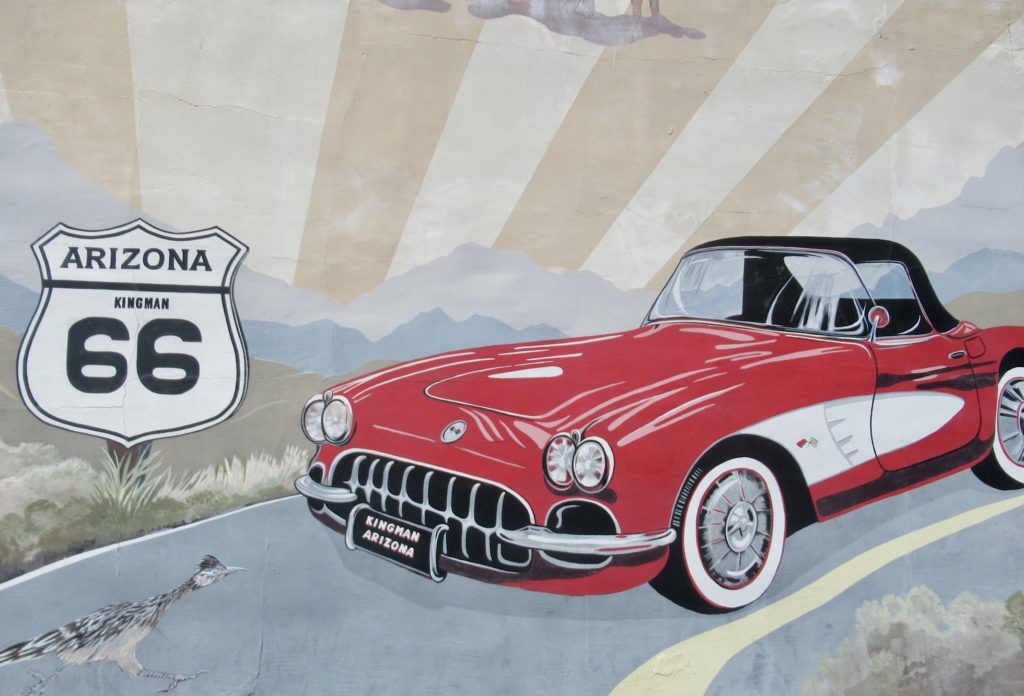
Exploring Kingman’s Route 66 Museum
We walked into the museum with its high ceiling clad in whitewashed tongue-in-groove wood. Exposed tufa stone and creaky hardwood floors add to the historic charm of our surroundings and provide the perfect backdrop for a series of excellent displays.
Route 66 has often been referred to as the Mother Road. This historic chunk of asphalt plucks on the heartstrings of anyone in search of the open road to adventure. The Arizona Route 66 Museum covers all nature of transportation – starting with a contract given to former Lieutenant Edward F. Beale.
As more and more people began emigrating westward, the government noted the need for good winter route. Beale was hired to survey and develop an all-weather road. He was also tasked with testing the success of camels in the southwest for future military use!
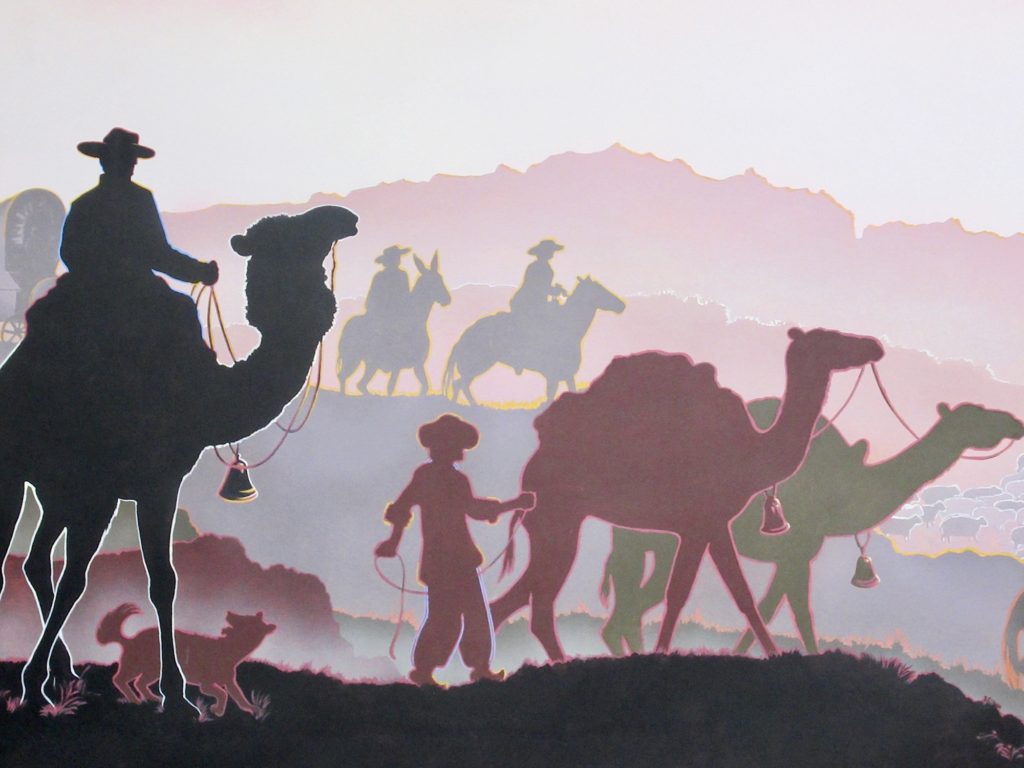
Wagons, horses, mules, dogs … and camels were the precursors to settlers in wagons and the first roads built for motorized vehicle travel. There is a wealth of information in the interpretive displays with dozens of stories from early travellers along these roads and the infamous Route 66. The historic photos are priceless!
Heading downstairs, we sat in the small theatre to watch a few minutes of video highlighting Route 66 through Arizona. It’s sorely in need of updating but again the stories of the people and places along the route are irreplaceable.
Discover Kingman’s Route 66 Electric Vehicle Museum
Opposite the theatre is the world’s first Electric Vehicle (EV) Museum. It’s one large room chock-a-block full of everything from a 1930 Detroit Electric Model 30 to the tiny Mobilette to the Buckeye Bullet 2.5 (a race car built by university students).
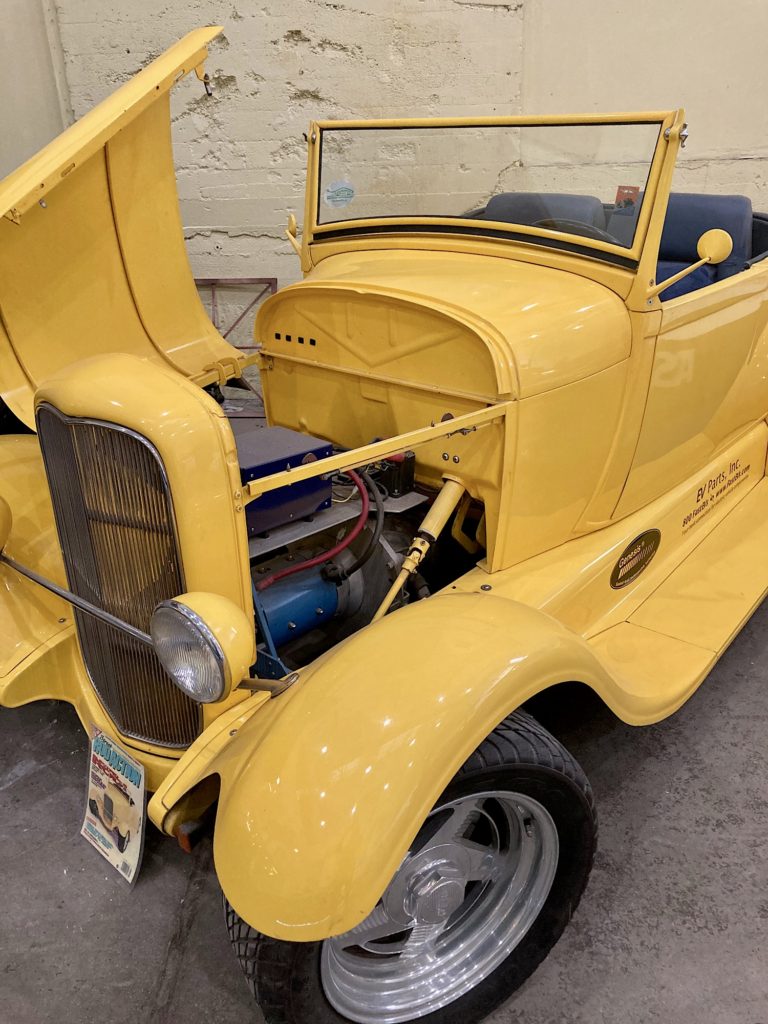
My favourite though is the Lightning Rod 2 (above) – a 1929 canary yellow Ford Roadster. Built by the founder of the Route 66 EV Museum Roderick Wilde and his partner Bob Rickard – it’s a shining star in this fun collection of electric vehicles. You can find more information about this one-of-a-kind car museum.
Mojave Museum of History and Arts
It took a couple hours to get through the Route 66 Powerhouse complex. We didn’t have much time but squeezed in a quick tour of the Mohave Museum of History and Arts. Although the displays are a bit tired and old school, they are packed with artifacts and the museum does a good job in recording the heritage of Northwestern Arizona – from Native American tribes to early settlers to ranchers and miners.
Do You Know Andy Devine?
The Mojave Museum has a corner dedicated to Andy Devine. Andy Devine Avenue goes straight through Kingman. There’s a festival and a rodeo named after him as well. So, who was this local legend?
He was a comedic actor known for his high-pitched raspy voice – and for playing the sidekick character Cookie Bullfincher in nine of Roy Rogers’ movies. But that was only a small fraction of the more than 400 films he appeared in during his prolific career. Born in Flagstaff and raised in Kingman, Andy Devine was and will always be a star in this town!
Monolith Gardens = Mountain Bike Heaven
Another “star” in Kingman is the Monolith Garden trail – a loop trail in the Cerbat Foothills Recreation Area. This one highlights outdoor adventure in the Explore Kingman Inside and Out!
It’s important to note that there are multiple parking areas within this recreation area. The closest one to from Kingman (off Hwy 93) is not necessarily the best starting point for the “green” Monolith Gardens trail.
We scouted the trail on the day we arrived but following Trailforks App directions went to the parking area off Metwell Road. It can be difficult to make a left turn onto Metwell with all truck traffic coming down hill on Hwy 93 – as we discovered.
After reaching the small trailhead, we discovered that the access up onto the Monolith Gardens trail from this parking area is a blue trail – a somewhat difficult and rocky blue uphill trail. Push, push, push my bike. But then we get to the top and – wow! It’s rolly-polly fun in the late evening sun – and the downhill ride back to the truck was actually a blast.
Coyote Pass Trailhead
The second time we set out to do the entire Monolith Trail from the upper parking lot – but here’s the kicker: it’s a divided highway. To access the upper parking area you need drive 5.7 miles (9 km) to a break in divided highway at North Sundown Drive, where you can make a U-turn. Now drive all the way back to Coyote Pass Trailhead on your right just off the pass summit.
After finally reaching the trailhead, we rolled up and down and around the 7.1-mile (11.5 km) trail – taking just over two hours with tons of stops to admire endless views. This would make an excellent hike is you don’t have a mountain bike.
The Foothills recreation area spans 11,300 acres of Mohave Desert grassland – read: some grass and a lot of yucca, beavertail cactus, prickly pear cactus, creosote and mesquite. Apparently, it’s home to mule deer, Sonoran Desert tortoise, coyotes, foxes, and dozens of bird and reptile species. We saw one cottontail bunny and a bunch of longhorn cattle grazing alongside the trail on our visit!
Bike, hike, visit a museum – whatever you do, don’t roll on through without stopping to explore Kingman and discover its star power inside and out.
Looking for More Arizona RV and Active Travel Adventures?
Check out RV Parks in Tucson, Arizona: East or West is Best? and Desert Trails RV Park for a look at active adventure on the east and west sides of the city. If you enjoy boondocking, you’ll love this post on Kofa National Wildlife Refuge.
When You Go to Explore Kingman
We camped at the Kingman KOA. It has hot, clean showers and restrooms, a laundry and is conveniently located close to grocery stores and active adventures. If full, we’ve also stayed at Sunrise RV Park. Love the helpful, friendly staff at Sunrise and appreciated the super clean individual toilet/shower rooms. Unfortunately, it is located immediately off the highway and truck traffic is steady (pack earplugs if staying for more than a night while you explore Kingman).
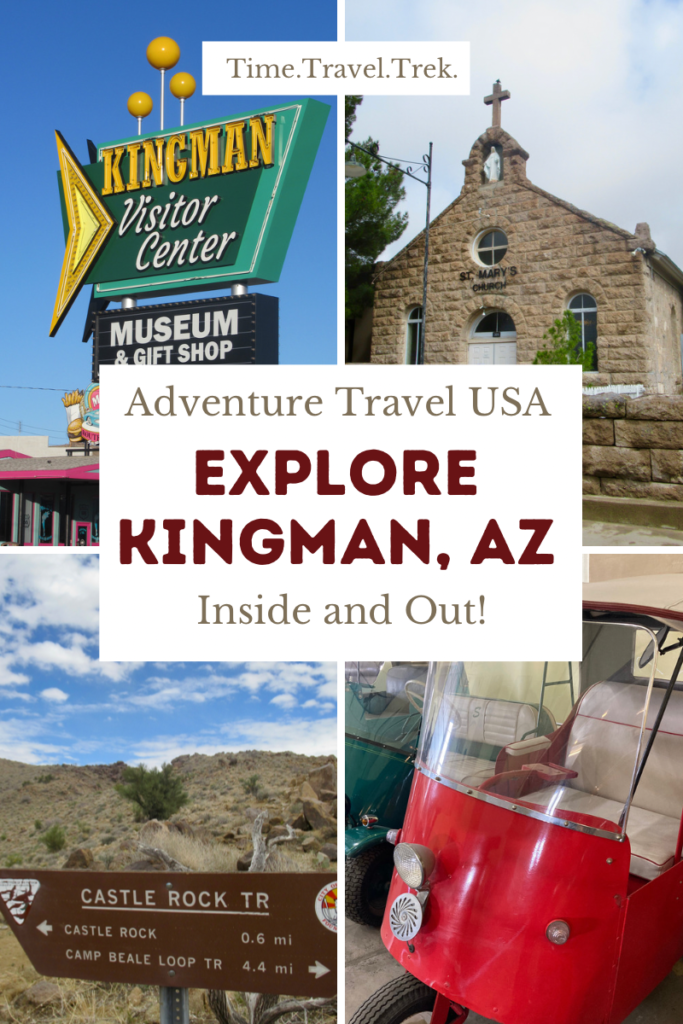
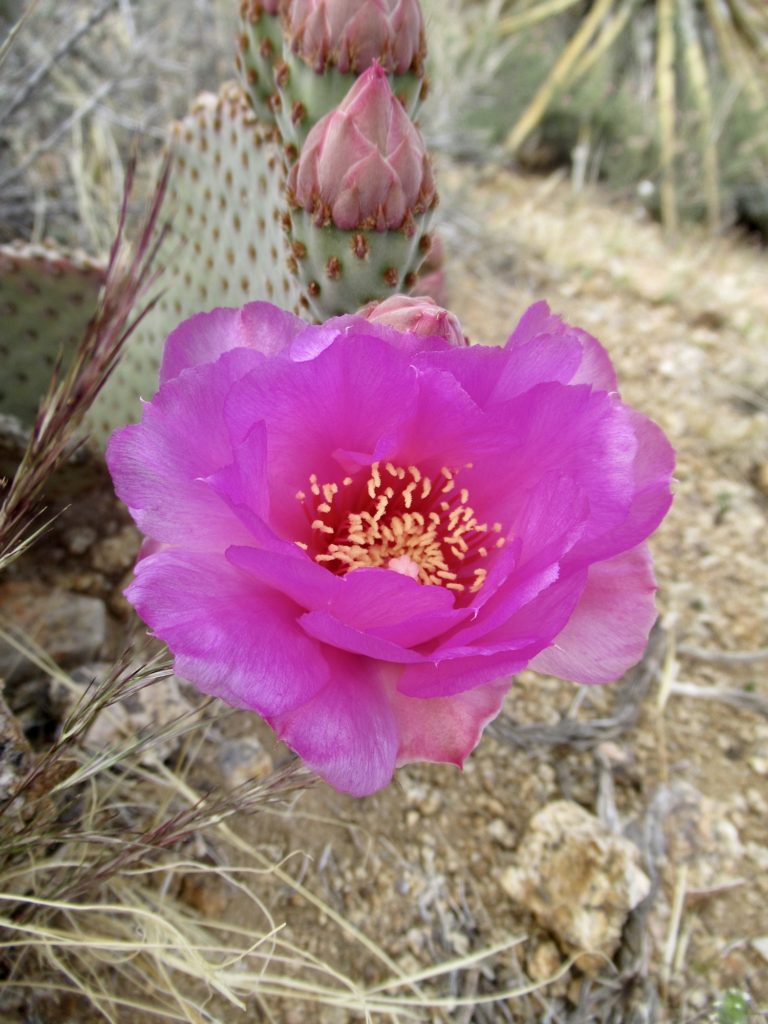
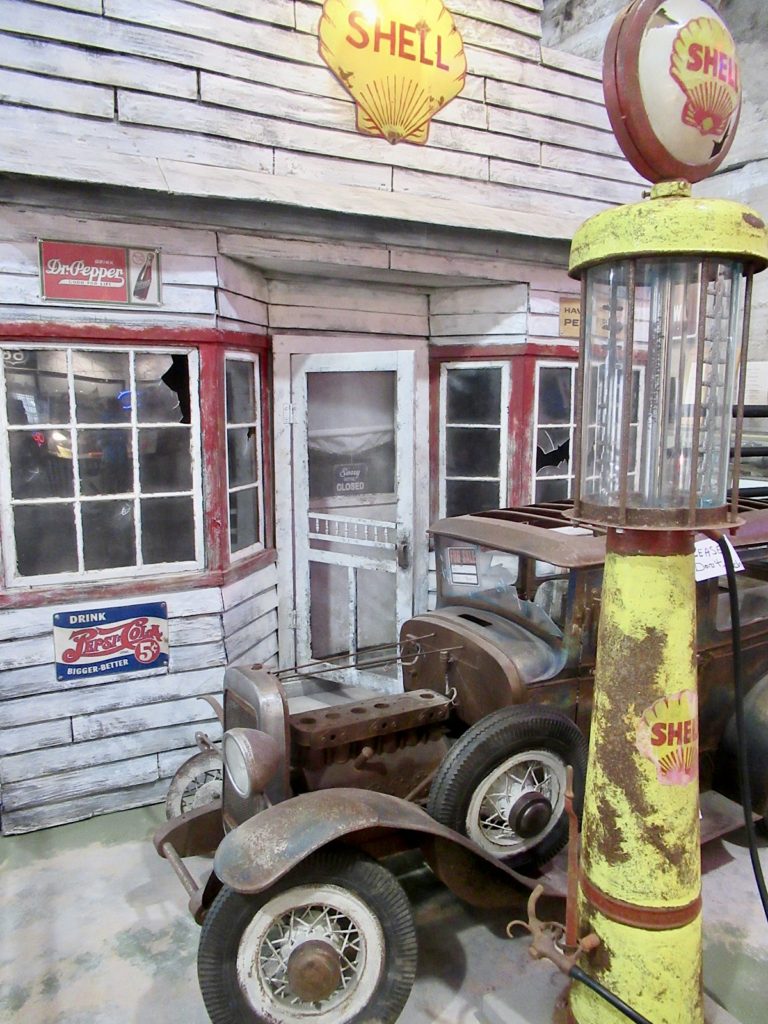
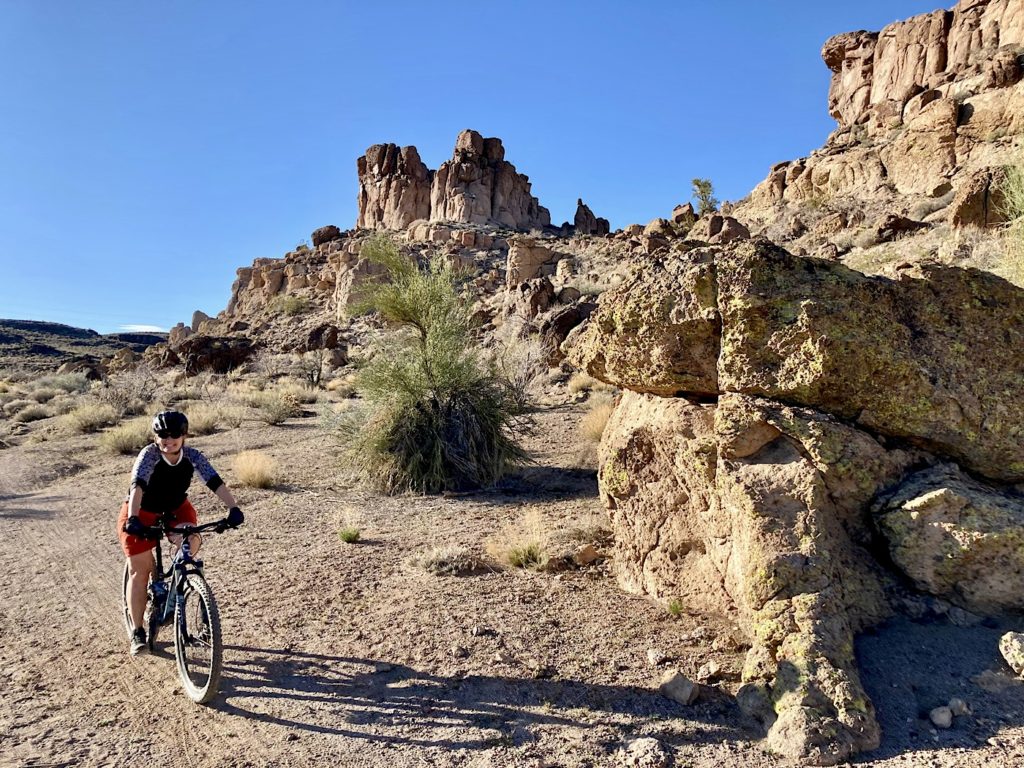
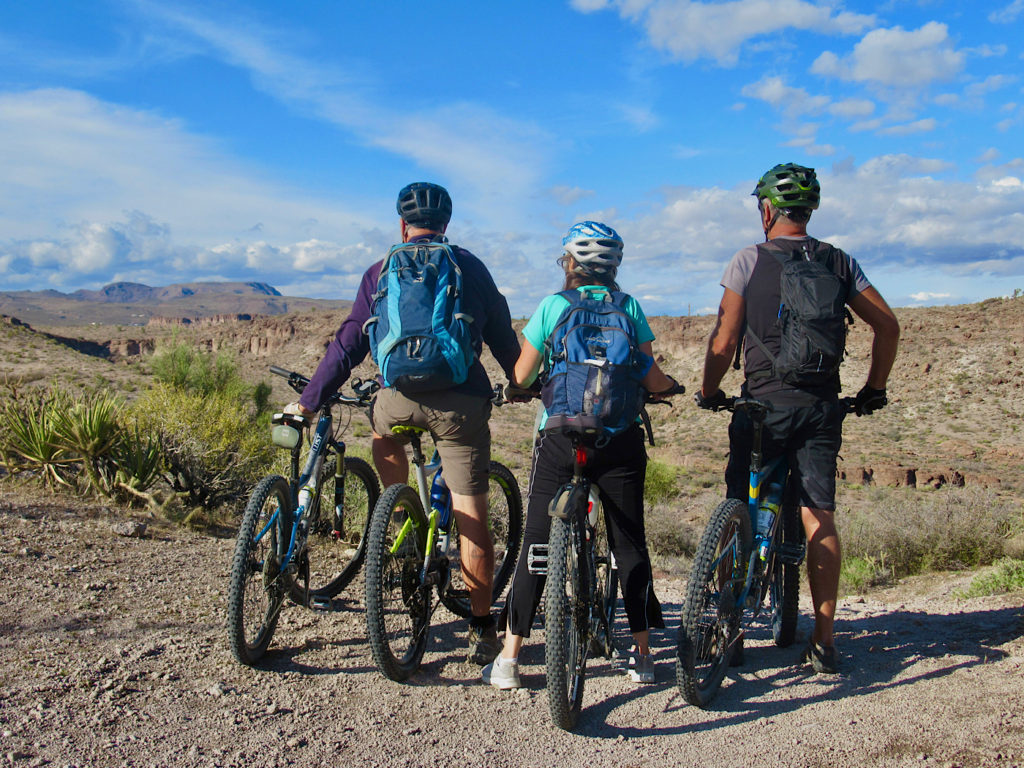
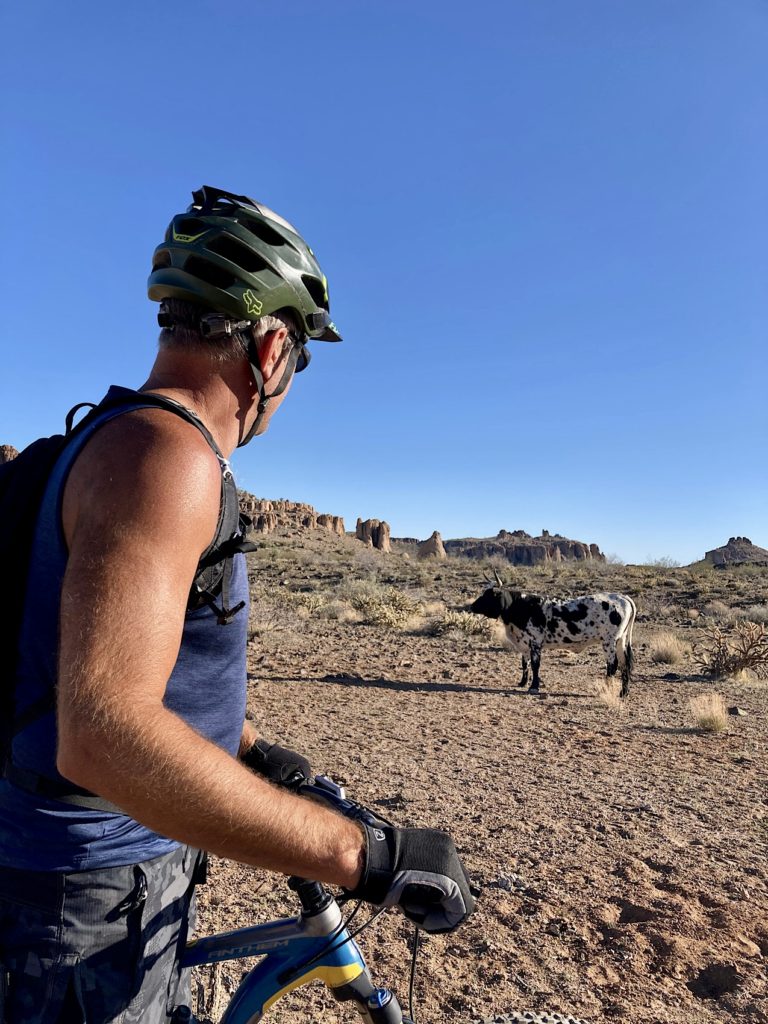
i lived in kingman from 1985 to 1997
best times of my life
miss it dearly
early spring time
where good comfortable boots
and hike the mountain trails, i have hiked every peak in the hualapais, great easy hikes. at one time you could rent a primative cabin for the night, another must do.
and by the way it is always windy in kingman, it would be note worthy if you were there and it wasnt windy,
plus check out the tiered park down town catty corner of the museum, great park
all the parks in kingman are first class
Haha – yes, we experienced a little bit of Kingman’s wind! Still, we enjoyed our short time there and will go back.